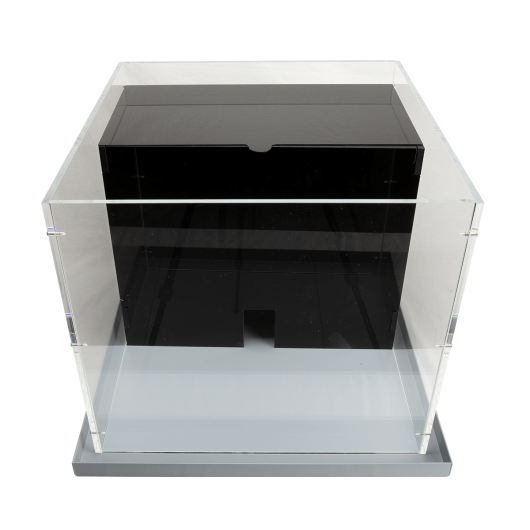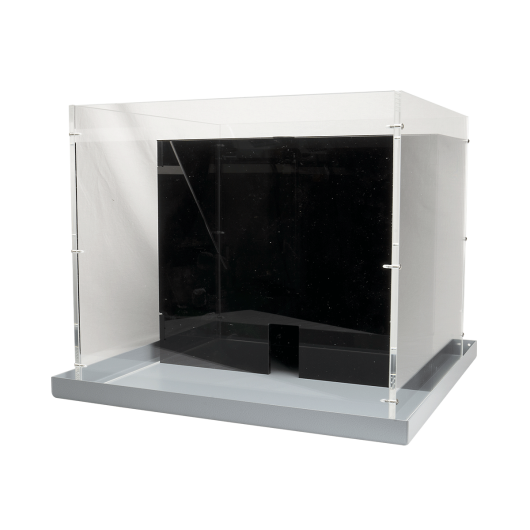


Light/dark box and open field combination, for rats or mice
Features
- High-contrast colors
- Non-reflecting surface
- Options available
- Reasonably rough “warm” surface texture
- Quality materials
Benefits
- Gives optimal results with any Video-Tracking software
- Guarantees optimal camera view and no glare
- Transparent or opaque white walls
- Selected for best rodent comfort, non-slippery
- Reliable and durable, easy to clean and store
Application
The light/dark transition test was originally developed by Crawley and colleagues (Crawley and Goodwin, 1980) and subsequently validated by Costall et al (1989).
The light/dark transition test is one of the most widely used tests to measure anxiety-like behavior in mice. The test is based on the innate aversion of rodents to brightly illuminated areas and on their spontaneous exploratory behavior in response to mild stressors, that is, novel environment and light. Time spent in the lit compartment, and the related exploratory behavior, are reliable parameters for assessing anxiolytic effects that may be useful in identifying and/or screening of anxiolytic and anxiogenic agents.
The original apparatus consisted of a small dark safe compartment (one third) and a large illuminated aversive compartment (two thirds), while more recently other models have been validated (Takao and Miyakawa 2006) in which the size of the two chambers is the same. Another difference between the original design and other models available is that the lit compartment is made of opaque white plastic. These differences, namely the size and openness of the light chamber, allow for the simultaneous detection of bright-space anxiety as well as open-space anxiety in the original version of the test.
Method paper
- J. Crawley and F. K. Goodwin: "Preliminary Report of a Simple Animal Behavior Model for the Anxiolytic Effects of Benzodiazepines" Pharmacology Biochemistry and Behavior 13(2): 167-170, 1980
- B. Costall et alia: "The Effects of ACE Inhibitors Captopril and SQ29, 852 in Rodent Tests of Cognition" Pharmacology Biochemistry and Behavior 33(3): 573-579, 1989
- M. Bourin and M. Hascoët: “The Mouse Light/Dark Box Test” J Vis Exp. 463(1): 55-65, 2003
- K. Takao and T. Miyakawa: "Light/dark Transition Test for Mice" JoVE 1: e104-e104, 2006



